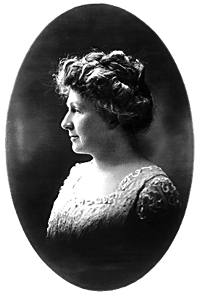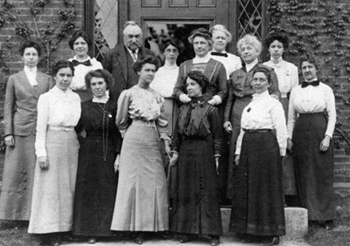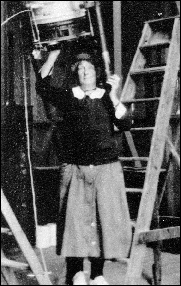
Cannon personally classified every stellar spectrum that appears in the HD Catalogue, though she relied on a team of assistants to record her classifications and organize the records. It was noted in the 1917 Annals of the Astronomical Observatory of Harvard College, "Miss Cannon was aided by several assistants, the average number being five... Among the assistants who have participated in this work at different times may be mentioned Misses Grace Brooks, Alta Carpenter, Florence Cushman, Edith Gill, Mabel Gill, Marian Hawes, Hannah Cocke, Joan Mackie, Louisa Wells, and Marion White." Cannon and her team began the classification of the HD Catalogue in October 1911 and proceeded to classify stars at an average rate of 5,000 spectra per month, up to three per minute. In only 2 years Cannon provided classifications for Pickering's original goal of 100,000 stars. She continued her work and after a total of 4 years had classified the spectra of 225,300 stars.
It is reported that Cannon and her team of computers earned only 50 cents per hour and that this was half the pay rate for men doing comparable work.
The picture below was taken on 13 May 1913 in front of Building C, which faces north. At that time it was the newest and largest building of Harvard College Observatory. It was specially built of brick to protect the astronomical data and glass negatives from fire. Since the astronomical photographs were stored on the ground floor and most of the women worked on the top floor, the building had a dumb waiter to convey the plates up and down. The women all worked in a large room on the east end of the third floor. Pickering had his offices on the west end across the central hallway. All the other men worked on the lower levels.

At the far left of the photograph is Margaret Harwood,
who had just completed her first year as Astronomical Fellow
at the Maria Mitchell Observatory. Beside her in the back
row is Mollie O'Reilly, a computer from 1906 to 1918.
Next is Edward Charles Pickering, Director of Harvard College Observatory.
Continuing along the back row is Edith Gill.
Then comes Annie Jump Cannon.
Behind Miss Cannon is Evelyn Leland.
Next is Florence Cushman.
Behind Miss Cushman is Marion Whyte.
At the far right of this row is Grace Brooks.
Ahead of Miss Harwood in the front row is Arville Walker.
The next woman may be Johanna Mackie.
In front of Pickering is Alta Carpenter.
Next is Mabel Gill, a computer since 1892.
IdaWoods is at the left of the front row.
